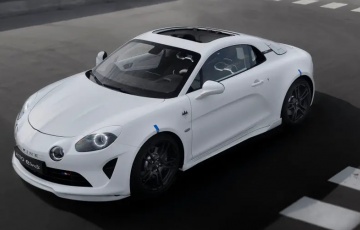Lightening Strikes Twice : Alpine A110 & Lotus Elise S1 Drive [review]


Alpine A110 & Lotus Elise S1 Drive Review : Lightening Strikes Twice
Singapore - During my formative years, the drop of any new lightweight limited edition was an occasion for shock and awe, especially if the performance 'heavyweight' was also attainable price-wise.
Before the 'easy credit' performance that comes with winding modern turbos up for big punch, manufacturers then had to spend relatively more on tuning a nat-asp engine for not too big a gain.
This meant that shedding weight was a more effective way of improving a performance machine's power-to-weight ratio.
JDM specials like Honda's original Type R cult classics, the EK9 Civic and DC2/DB8 Integra, rubbed tyres with French 'fries' like the 106 Rallye and 306 Rallye.
Cars in general then were a lot lighter, but it's all relative innit, and losing weight not only improved their dynamic abilities, but also imbued their owners with street-cred worth its weight in gold among the cognoscenti.

To this (then) young petrolhead, it was this purity in a brand's vision and single-minded focus to driving thrills that made such flyweight sporting machines so endearing.
We've always maintained that 'fun' and 'fast' are mutually exclusive concepts, and what the Type R and Rallye models lacked in outright straight-line punch, they more than made up for where it really mattered: the corners.
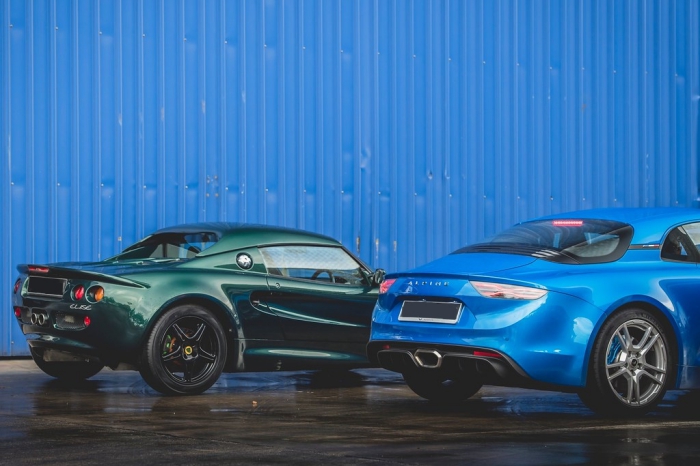
A lower unsprung weight sees less stress on the mechanical components and running gear.
However, with today's performance cars relying on a barrage of electronic and chassis trickery to manage weight and agility in dynamic situations, something as exotic and holistic-sounding as 'lightweight model' possesses an evocative appeal,... never mind that this 'lightness of being' used to be the norm for sportscars.
Up to 2000, the idea of deliberately stripping-out and 'lightening' performance cars was anathema in the premium and luxury segments, with several notable exceptions such as Porsche's 911 RS models, the BMW E36 M3 LTW (and subsequent E46 M3 CSL), and of course, the uncompromisingly sporty Lotus cars.
(Click HERE to read about the BMW E46 M3 CSL)
(Click HERE to read about the Porsche 911 RSes)

Beyond the mid-2000s, as more advanced exotic materials entered the game, affordable lightweight performance cars were getting thin on the ground, since it was increasingly less acceptable to bin comfort and convenience amenities that the average modern car owner couldn't do without.
Porsche was one of the early ones to perfect the narrative for its 'RS' models, which embrace Colin Chapman's 'Simplify and then Add Lightness' philosophy, and enthralled buyers into embracing the suck of shelling out more for less.
Naturally, it wasn't long before Ferrari and Lamborghini followed suit, with models like the Challenge Stradale and Superleggera igniting the 'lightweight' movement within their respective line-ups.
(Did anyone say Challenge Stradale? Click HERE to read more about Ferrari's lightweight berlinettas)
As you can imagine, these were as far as possible from slumming it - the cars were lightened and tweaked for even more incisive handling, but remained adequately equipped and pliant enough for daily-drive use.
Unfortunately, the million-and-up price points put them out of reach of regular petrolheads, which is why a sub-S$300k contender like the A110 is good enough cause to celebrate.

ALPINE... PASSES? - Alpine A110
Alpine's (that's Al-peen to you) first model in yonks, the A110, is often touted as a Cayman-killer, with everyone bringing Porsche's compact mid-engined/rear-drive coupe up whenever the Alpine is discussed.
Unfortunately, short of the similar powertrain configuration between the two, it's hard to understand why...

There's possibly some kinship between the A110 and the first generation Cayman from over a decade ago. However, the latest Caymans are far removed from their compact progenitor.
Like modern 911s, the 718 has grown in weight, size and price - the 1.4-tonne 718 has a 2475mm wheelbase and measures in at 4393 (L) x 1801 (W) x 1286mm (H) - as well as became increasingly aggro and belligerent in looks and drive, with plenty in the way of aero and performance to take huge chunks out of any road... and potential rival.
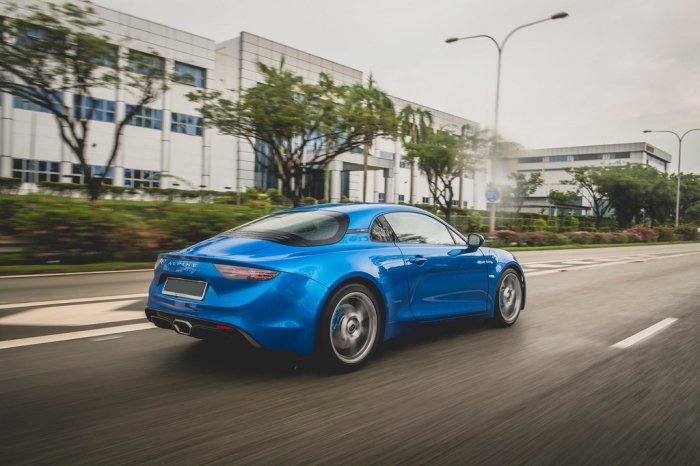
In contrast, the A110 is a sanguine character, genteel even, with dainty 4180 (L) x 1798 (W) x 1252mm (H) proportions, a petite 2420mm wheelbase and tautly-styled retro-esque aesthetics that hark back to the original A110 of the 1960s.
In fact, if not for the flash of electric blue, we almost missed seeing the compact coupe as it sat prettily between two hulking Bentleys at the dealer carpark!

Alpine doesn't use the term 'sportscar' on the A110 because it's trendy, and the coupe's sense of purpose becomes clear the moment you slip into the slinky lightweight bucket seats.


Despite its sporty credentials, there's no wide side-sill to navigate as you slide into the cabin, and the seating position doesn't require convoluted gymnastic contortions to squeeze into, which is a big plus in the daily-use stakes.

(The Singapore-spec A110 gets the good stuff from the 'Pure' like the lightweight rims and Sabelt seats)
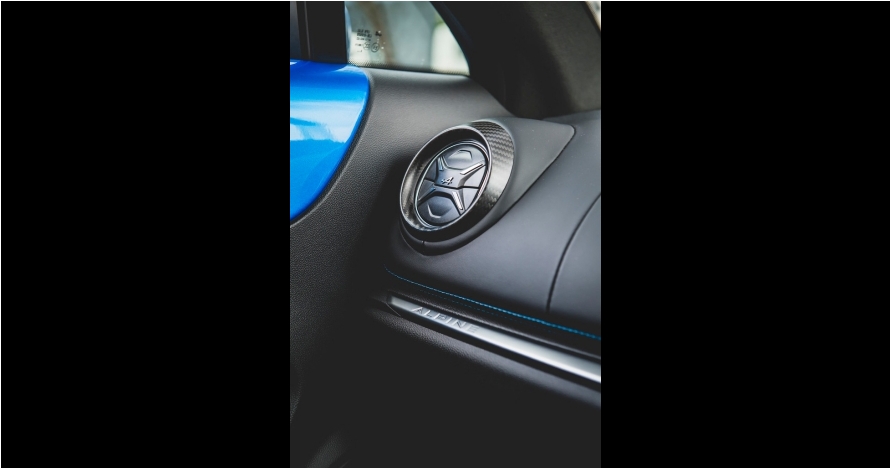


Don't be fooled by the stylised, Avengers-like 'A' emblems scattered throughout the car, because it's far from Endgame for the A110.



The cabin is designed around the driver, with shift duties handled by the paddle-shifters after you've engaged 'D' via the central tunnel.

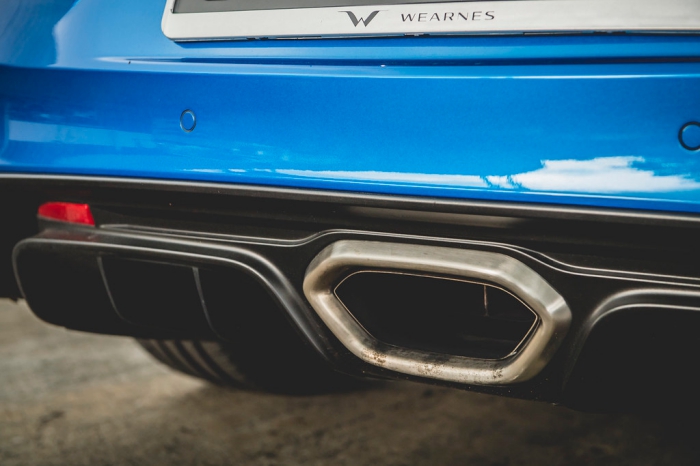
The instruments, and more importantly, engine sound, change character depending on drive mode.
You also spot similarities between the A110 and the Megane Renaultsport model it shares engine and interface with, especially in the turbo'd 1.8-litre's explosive nature and snappy 7spd dual-clutch.

However, the A110's engine has been detuned to 252hp, which is still stupendous for the all-aluminium Alpine - at under 1.1-tonnes, it weighs 300+kg less than the Megane R.S.


Such kerbweight is almost unheard of in the sportscar segment today, especially since the A110 retains a decent amount of equipment for comfort and convenience during cruising and commuting, all operated via a seven-inch touchscreen.

(Dressed-up rocker switches look cool, but feel naff because they're plasticky to the touch)
Like the Renaultsport models (and the R35 GT-R), the A110 driver also has access to a comprehensive telemetery system that keeps tabs on the car's various conditions, including braking-force, g-force, boost and oil pressure/temperature/level.
If you ask us, the essential stuff for a performance car, yet it's amazing how many brands leave the essentials out on theirs...

We like how the A110 has been engineered to provide adequate 'give' in its damping, with a natural 'roll' to its corner-carving antics that is a nice contrast to the frenetic A-to-B bursts of unyielding, no-roll behaviour that many modern sportscars possess, which some extol as a virtue.
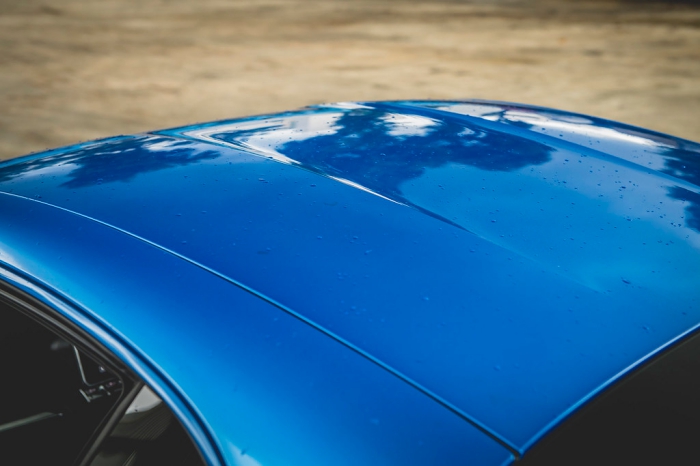
(Racing-inspired double-humped roof helps accommodate helmets)
Crucially, it is this aspect of the A110 that reminds us most of the older sportscars, but unlike the 90s examples, the Alpine has enough modern conveniences to cope with the daily drudge between home and office.

There's a fluidity and grace to its dynamics that create a wonderfully organic experience and you don't appreciate this until the first corner, as you turn its chunky steering wheel in anger.

It's not the raging tarmac terrorist many were expecting, and we like that it doesn't have the all-bark-all-bite, angry, angsty character that characterises modern sportscars.
You'd consider a car like the A110 only if the emotional connection between man and machine during a drive is more important than snob appeal.

In fact, the Alpine proved such a thinking man's driver's car and 'blast from the past', we decided to pull out our favourite 'modern' Lotus, the Elise S1, to keep it company.

LOTUS POSITION - Lotus Elise S1
To us, the S1 best embodies the essence of Lotus, and like the A110, isn't overstyled with savage samurai-style slashes and cuts that are all the rage these days - even the current crop of powered-up Lotus models aren't immune from this.
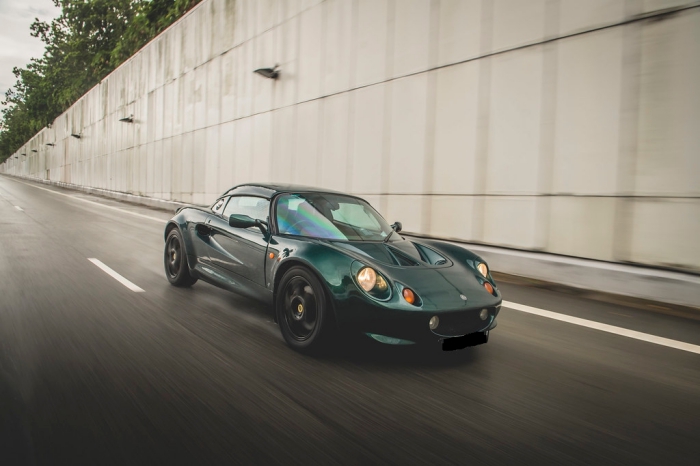
This is also why we decided on the S1 for a true back-to-basics experience that doesn't have its engine performance turned way up.
We have a penchant for unassuming types like the A110 and S1, which speak softly... but carry a big enough stick.

Compared to the compact A110, the S1's (L) 3726 x (W) 1701 x (H) 1202mm and 2300mm wheelbase proportions are even smaller, and it tips the scales at just under 700kg - to put it in perspective, that's half the kerbweight of a 718... but the Lotus is certainly not half the fun!



A peek into the spartan cabin helps explain why, and it's hard to imagine a road-going car as bare as this, as the Lotus barely scrapes together the bare necessities for driving... but you'll quickly discover this isn't hard to bear at all!

Furthermore, it quickly becomes clear the little Lotus is only an instrument with which the driving artist uses to lay down the most beautiful, sticky streaks of tyre-marks on the tarmac, even as you take in the thrill of hearing the pitter-patter crunch of road grit and feeling every inch of the road from the seat-of-pants.

It's not that hard to explain: Some folks prefer their steaks rare (dancing with danger) to well-done (why would you even bother?), and you quickly realise an invigorating drive is all it takes to reduce the driver to a warm gooey filling (although we think it's more about 'feeling'!) at the heart of the evergreen Elise.



And that's just it - every drive in the S1 is a series of scintillating events, not necessarily because of how fast you're going, but because of how much you're feeling.
The driver is the sole conductor of the Lotus' delightful mechanical manoeuvres, as steering, gear-shift, brakes, accelerator and clutch work together in beautiful harmony to conjure up a rapid, flowing pace as the romance with the winding road draws you ever deeper into its fold.

The S1 is not without its share of foibles (for instance, getting in and out is an art form), but it's a simple, uncomplicated car that serves up simple, uncomplicated driving fun that is so unadulterated as to be borderline primal.

The nat-asp 1.8-litre K-series engine at the Elise's heart is tuned for a modest 120hp/165Nm, but like all things about the Lotus, requires a firm hand to extract the best from.

(How do you think it gets this light? No electrics, no assisted anything)
Coupled to its flyweight 700kg, this translates readily to balanced fun that has its roots in a holistic philosophy.
Best of all, you don't have to keep a constant eye on the speedo on the straights, because with the S1, all the drama you'll ever need is in the corners.

Like the A110, the order of the day with the Elise S1 is smooth and swift progress, as you coax and cajole the chassis, engine and gearbox into entering a Zen-like state of perfect equilibrium between man and machine, as you continue on your quest to attain motoring nirvana.

Such lightweight and hard(er)-core performance cars continue to evoke much wow from petrolheads, and enjoying a brisk drive in one remains an enlightening experience.
PHOTOS Zotiq Visuals
ALPINE A110
Engine 1798cc, inline4, turbo
Power/rpm 252hp/6000rpm
Torque/rpm 320Nm/2000-5000rpm
Transmission 7spd dual-clutch
0-100km/h 4.5secs
Top Speed 250km/h
Fuel Consumption 6.4l/100km
CO2 144g/km
Kerbweight 1098kg
LOTUS ELISE S1
Engine 1796cc, inline4
Power/rpm 120hp/5500rpm
Torque/rpm 165Nm/3000rpm
Transmission 5spd manual
0-100km/h 5.9secs
Top Speed 202km/h
Fuel Consumption 7.1l/100km
CO2 144g/km
Kerbweight 690kg






